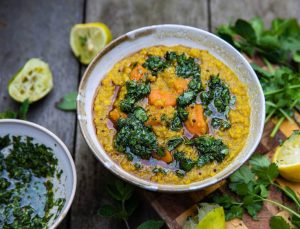 Cleanses are a great way to reset your system and pave the way for making better health choices to come. Long-term detox programs often initially bring lowered energy levels and are recommended to do only when you are able to take some downtime at work and in your daily life. They are also only recommended to do during the more mild weather seasons of the spring and fall. If you are craving some detoxification, but it is during an off-season or you are simply too busy to commit to a longer cleanse, the Ayurvedic cleanse can be modified to fit your current needs, season, and schedule. And although a three-day cleanse is not terribly long, it can still be very powerful for detoxifying your body, balancing your mind, boosting your digestion-metabolism, and setting the stage for a healthier future.
Cleanses are a great way to reset your system and pave the way for making better health choices to come. Long-term detox programs often initially bring lowered energy levels and are recommended to do only when you are able to take some downtime at work and in your daily life. They are also only recommended to do during the more mild weather seasons of the spring and fall. If you are craving some detoxification, but it is during an off-season or you are simply too busy to commit to a longer cleanse, the Ayurvedic cleanse can be modified to fit your current needs, season, and schedule. And although a three-day cleanse is not terribly long, it can still be very powerful for detoxifying your body, balancing your mind, boosting your digestion-metabolism, and setting the stage for a healthier future.
This three-day cleanse is appropriate for all different body types and imbalances, although there may be slight changes for your specific Vata, Pitta, and Kapha needs (read more here). It consists of a mono-one diet of kitchari, cleansing herbal medicine, oiling (both inside and out), sweating, and a few other self-care necessities. This step-by-step chart is lined up to guide you on a very specific three-day cleansing regimen; however, modifications can be made if needed. The most important factors will be to stick to the kitchari diet, avoid all sugar and caffeine, and apply as many of the recommended self-care practices as possible.
Here is a list of your recommended cleansing needs:
The 3-Day Ayurvedic Cleanse
Herbal Necessities:
- Tikta Ghrita or Triphala Ghrita (substitute with plain ghee)
- Triphala Churna
- Nasya Oil
- Detox Tea (substitute with our extra potent ginger tea recipe or CCF Tea recipe)
- OM Shanti Tea (substitute with ginger tea, CCF Tea, or calming herbal tea of choice)
Food Necessities:
- Basmati rice or brown rice (use quinoa for Kapha types)
- Mung dal (split yellow mung beans, substitute with split red lentils)
- Agni Churna or similar spices
- Plain Ghee (substitute with coconut oil for Pitta or sesame oil for Vata and Kapha types)
- Veggies such as kale, collards, and carrots
Purchase our 3-day Kitchari Kit here.
Try our Classic Cleansing Kitchari Recipe!
Self-Care Necessities:
- Tongue Scraper
- Medicated Massage Oil
- Ginger-Baking Soda Bath Blend (or try our DIY Ginger Detox Bath recipe)
Click here for a printable copy of this chart.
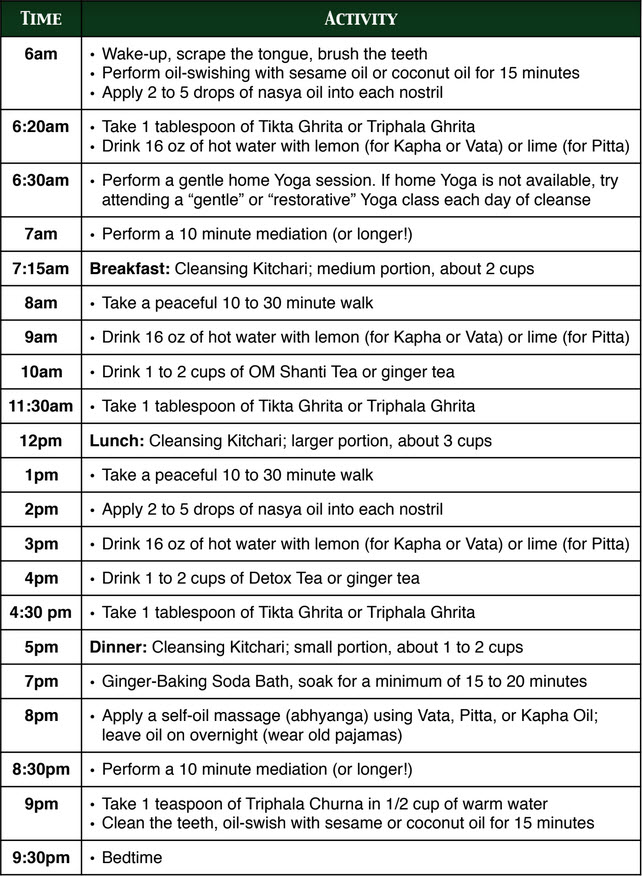
Click here for a printable copy of this chart.
Follow this chart to the best of your ability for each day of the cleanse. As you can see, this is a very time-involved cleanse and therefore it is best done on non-work days. For the “down-time” between activities, it is recommended to take it easy, rest, avoid social activities, and spend some time in “Self-study”. Make the most out of your cleanse and keep your integrity high! You are worth it!
After the cleanse is over, slowly incorporate new foods in, although keep to eating warm, nourishing meals and avoid all cold and raw foods for at least a week. Keep up as many of the self-care practices as you can, even if only a couple of days a week. For example, you can take a ginger bath 1 to 2 days a week, continue to drink the Detox Tea, take a 20-minute walk daily, practice the self-oil massage 1 day a week, and make time for the 10-minute meditation each morning. Remember, a cleanse is not a quick fix to perform just to go back to your old habits; instead, use it as a preliminary measure to reset your body and mind with the intentions and action plan to hold these healthy practices with you each day.
Helpful links:
- Detox Yoga Series
- Best Basic Kitchari Recipe
- Classic Cleansing Kitchari Recipe
- Extra Potent Ginger Tea Recipe
- How To Perform an Ayurvedic Self-Oil Massage
- Quick and Easy Homemade Ghee Recipe
Purchase our 3-day Kitchari Kit here.
Discover more healing recipes with my 30-Minute Ayurvedic Cookbook!

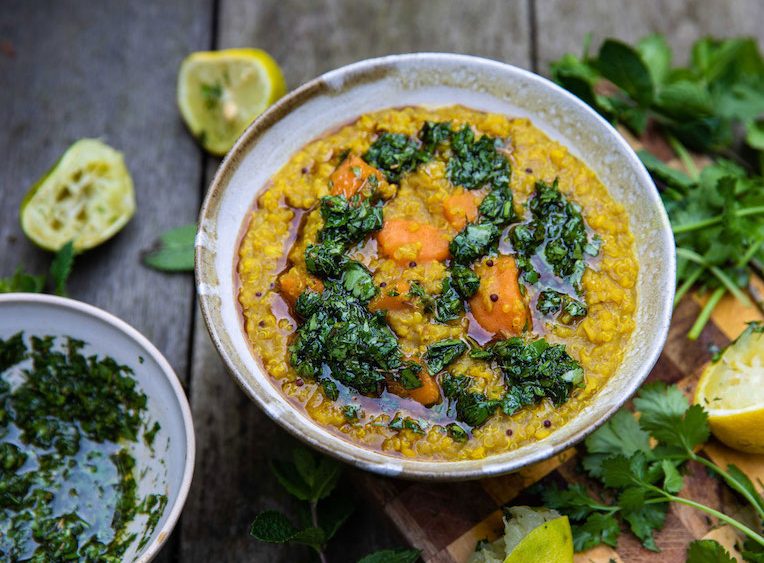

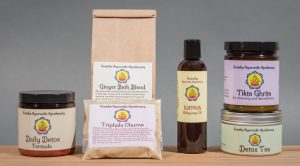
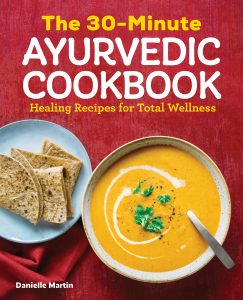
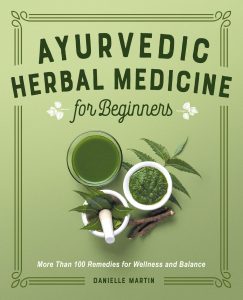

[…] If you want to get back into balance, you can do it the Ayurvedic way with kitchari, which is pure comfort food. My friend and personal practitioner Danielle of Svastha Ayurveda has an great way to do it, including routines and a killer kitchari recipe. Plus, it’s only 3 days. Read more about it here. […]
Thank you for such a beautiful posting.
Hi Laura,
Thank you for your kind words. I am glad that you enjoyed the information. I hope it helps you on your cleanse! Feel free to contact me anytime with questions.
Be well:)
Namaste,
Danielle
I finished this a few days ago and felt it to be very beneficial. Two questions- I know dairy is out during cleanses and discouraged post cleanse for awhile. What about lassi? I make fresh yogurt from raw milk boiled with spices. Secondly, I’m doing the rejuvenation phase and am also continuing detox practices like eating a lot of kitchari, drinking hot water in the morning, and driknking detox tea daily. How do you balance ongoing cleansing with ongoing rejuvenation in everyday life?
Hi Tara,
Thank you for your great questions! I apologize on the late response and I hope your post-cleanse is going well!
In regards to the dairy, lassi is alright (made by fresh, homemade yogurt), but it depends on the length and intensity of the cleanse to say how soon you can reintroduce it back into your daily diet. For the three day cleanse, I would recommend to wait at least three days post-cleanse. Then it can be added in a 1:4 ratio (yogurt to water) along with cumin and other digestive spices. If you had done a more lengthy and intense cleanse, the ideal reintroduction time would be longer.
It is good to have a balance of rejuvenation and cleansing in your life for daily maintenance. You may find that sometimes your body needs more of one than the other; this is good to listen to as well. Eating kitchari daily, drinking hot water, and drinking a cleansing herbal tea such as the Detox Tea (which is relatively mild), are all great ways to promote cleansing without leading to depletion. This will help balance out some of the heavier and more building practices of rejuvenation such as the Ojas Drink and Rasayana Ghrita.
There are a handful of practices that are both cleansing and rejuvenating which can also be helpful. Taking Triphala Churna or Triphala Ghrita each night is one of them. Adding ghee to your food (in moderation) is another. Incorporating meditation, simple pranayama (breathwork), mild Yoga, and/or gentle exercises into your daily routine will help promote both of these seemingly opposing actions as well.
I hope this helps to answer your questions! Many blessings to you!
Namaste,
Danielle
Can I ask you something about this
Of course, Maartje! Feel free to write in with your question and I will answer it as best as I can. . .
Hi, Danielle.
I hope you are enjoying your early Spring!
I am getting ready to do this 3 day kitchari cleanse. My first question has to do with the ginger baking soda bath. As I don’t like taking baths, I’m wondering if there is a substitute for this or if it can be skipped altogether?
Also, is there a best recommended time in the Spring to do the cleanse or is any time in April or May fine?
And what is the length of time for the post cleanse period for this 3 day cleanse?
Thanks so much.
Namaste,
Leanne
Hi Danielle:
I like to do a 3 day cleanse, and appear to be a vata (gas&bloating),
Now that is early summer: Would it be fine to use “basmatti rice” with the mung dal?… Will the “Agni churna” be fine–not to heating for summer?
And during the 3 nights of cleansing should take “tripala” and
Take 2 cups of CCF tea each day?
I am currently been taking some Fennel, Coriander and “a bit of Cumin” seeds tea, but today I added a little Anantamul and Guduchi because I have a strong body odor, and I am hoping Anantamul can help with that… I don’t like Cumin that much, so sometimes I just make Fennel, Coriander, Ginger, Cinammon tea.
I would appreciate your assistance
Hi Alejandra,
Thank you for writing in with your questions!
If you are not of a Kapha origin and you do well with digesting Basmati rice, then performing this cleanse with a traditional kitchari recipe (Basmati rice and mung dal) should be suitable for you. I would still recommend taking the Triphala each night before bed (you can start this 7 days before the cleanse if time permits) and drink two cups of the digestive tea (CCF or your own variation) between meals. The latter can also be started up to 7 days pre-cleanse as well. And both can be continued post-cleanse as long as needed.
A strong body odor tends to be a Pitta issue and also relates to toxins. The Anatamul and Guduchi should be a good addition, and hopefully the cleanse as a whole should be beneficial as well. Make sure to sweat each day (sauna or ginger bath) to help remove the toxins further.
Let me know if any further questions come up! Happy cleansing:)
Namaste,
Danielle
I just finished this cleanse and it was an amazing experience! The biggest positive impact was the cognitive benefits I began to experience on day 2. Its like I was able to read paragraphs again without getting completely distracted. Thanks for providing such clear instructions, they were really helpful.
A few questions for you:
1. Is it ok to include kitchari as a meal replacement (like dinner) every day or is it something that should only be eaten occasionally?
2. Is this 3 day cleanse ok to do monthly or should it only be every few months with priority given to the changing seasons?
Thanks again!
Hi Steve,
Thank you for writing in! I am so happy the 3-day kitchari cleanse worked so well for you. As a working mom, this is one of my favorites too since I rarely have the capacity to do longer cleanses.
In regards to eating kitchari for dinner, YES!! Kitchari is a delicious and nutritious meal option anytime, not just during a cleanse. I have been eating kitchari as a lunch and dinner staple for well over a decade. In fact, if I go a few days without it, I crave it quite a bit. I do suggest trying different recipes though. This will help it not get too boring and will ensure a wider variety of nutrients.
This cleanse is suitable to do up to four times a year (generally speaking), but I would not suggest doing it every month. A better option for an ongoing kitchari cleanse would be to do a weekly, one-day cleanse in between your seasonal 3-day cleanses. I have instructions for this here, but let me know if any questions come up.
Many blessings!
Namaste,
Danielle